- Common Symptoms Associated With Joint Pain
- Causes of Joint Pain
- Joint Pain Treatment Options
- Types of Light Therapy for Treating Joint Pain
- Benefits of Photobiomodulation for Joint Pain
- Inflammation and Nutrition
- Other Treatment Options
- How to Treat Joint Pain With Photobiomodulation
- Frequently Asked Questions
- Summary & Final Thoughts
Many people think of red light therapy primarily as an anti-aging tool used by dermatologists to treat fine lines and wrinkles, and to stimulate hair growth. But in recent years, scientists have discovered that certain types of red light have proven benefits in the context of joint pain and arthritis — ailments that plague a significant portion of the population.
In this article, I’ll outline the different ways joint pain can manifest and highlight some of the most effective treatment options, including red light therapy. Specifically, I’ll be talking about low-level laser therapy (also known as photobiomodulation or PBM), a treatment option that I was recently exposed to while dealing with a shoulder injury I sustained during a workout.
Photobiomodulation uses lasers (or a combination of lasers and LEDs) to penetrate deep into tissue, increasing oxygenated blood flow to the injured areas in order to help rebuild cartilage tissue and speed up the healing process.
PBM is arguably the most effective way to treat joint pain (including muscle pain, knee pain and arthritis), because laser light offers deep tissue penetration that increases oxygenated blood flow, rebuilds cartilage tissue and reduces inflammation.
In fact, PBM has been shown to offer the following benefits — which I’ll discuss in more detail later in this article:
- Cartilage healing.
- Reduced inflammation.
- Increased blood flow to treated areas.
- Pain reduction.
The use of PBM technology has exploded in recent years, but mostly in clinical settings and research labs. The good news is that there are now devices available — such as the Kineon Move+ Pro — that allow people to treat their injuries and chronic pain at home.
But before we dive into the nitty-gritty of light therapy and PBM for joint pain and arthritis, let’s cover a few key basics.
You can also jump directly to the section of this article that covers how to leverage red light therapy for treating joint pain. If you’d like to take a deep dive into how the technology works and learn about adittional use cases (including skin health, sleep and weight loss), check out my article on the health benefits of red light therapy.
Common Symptoms Associated With Joint Pain
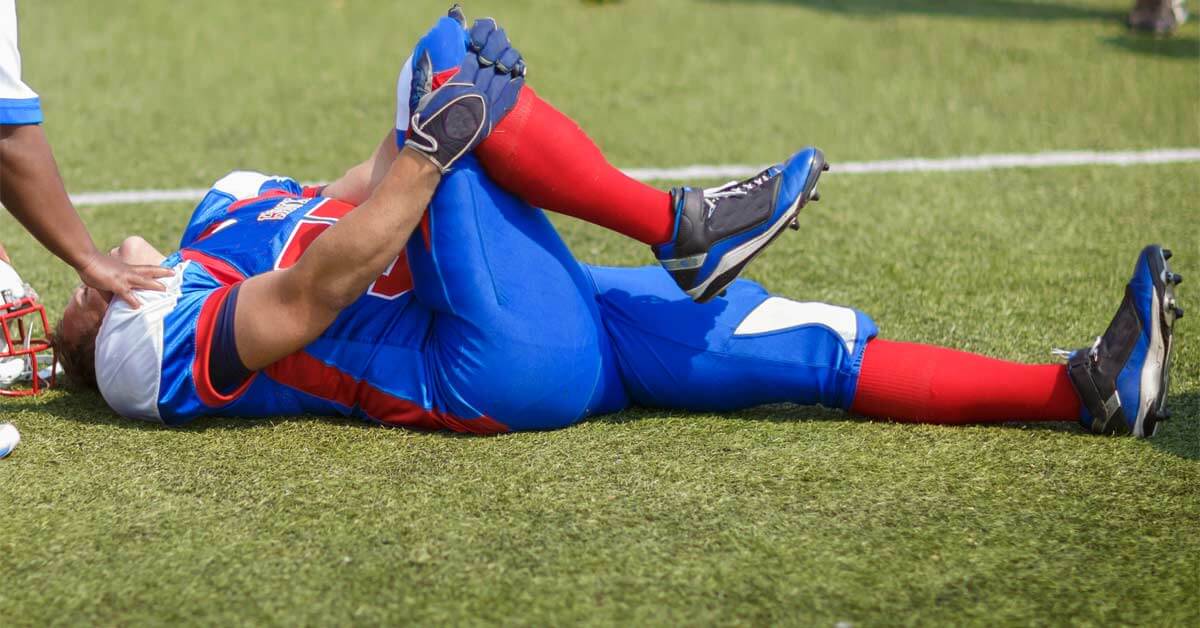
Depending on the root cause of your joint pain, you may experience one or more of the following symptoms:
- Limited range of motion and mobility.
- Popping or crunching noises.
- Redness and warmth to the touch.
- Swelling and stiffness.
- Weakness or instability.
I have a buddy who played basketball all of his life and eventually wore out the cartilage tissue that cushions the knee joints. As a result, he often suffers from severe knee pain and instability during certain CrossFit exercises, such as lunges and box jumps.
Others may experience swelling, stiffness, redness or warmth to the touch, all of which are signs of inflammation. I’ve also heard from some people who hear a popping or crunching sound when trying to straighten or bend the knee — a potential sign that bones are rubbing against each other due to worn-out cartilage tissue.
Causes of Joint Pain

The most common causes of joint pain include trauma (or injury), wear and tear (often caused by excess body weight) and chronic inflammation (including arthritis).
Injuries to the knee often result in a sprain or tear of the anterior cruciate ligament (ACL) or the meniscus (the rubbery cartilage that acts as a shock absorber between your shin bone and thigh bone). Undue stress on the knee (e.g., due to excess weight) can also lead to patellar tendonitis (inflammation of the tendon that connects your kneecap to your shin bone).
Other joints in the body (including the shoulders, elbows and hips) have similar ligaments and tendons that can suffer from tears or sprains.
Joint pain caused by injuries is sometimes easier to alleviate using non-invasive treatment options such as red light therapy or physical therapy, because it’s often just a matter of time before the body heals itself. Therefore, as long as you don’t get in the way of that natural healing process, you have a good chance of a full recovery. In some cases, surgery might be necessary to reattach a torn ligament or cartilage tissue.
Inflammatory causes of joint pain — including rheumatoid arthritis, osteoarthritis and gout — are often difficult to treat if you don’t fully understand the underlying root cause. Remember, inflammation is merely a symptom of most chronic pain, not the cause of it. Unfortunately, most medical professionals have little to no training in nutrition and don’t understand the significant influence food has on the human metabolism as related to inflammatory processes.
As a result, treating the symptoms of joint pain with over-the-counter non-steroidal anti-inflammatory drugs (NSAIDs), corticosteroids or other anti-inflammatory medication will only mask the underlying problem.
Warning: NSAIDs have been shown to slow down recovery and promote the degradation of cartilage tissue, and their chronic use can foster inflammation. As such, I’d highly recommend against the use of such drugs.
For example, if excess body weight is putting undue stress on your knees (thus causing inflammation and pain), the only solution is to lose weight.
Remember, acute (functional) inflammation is a critical component of the body’s healing process and suppressing it without removing what’s triggering it will not fix the problem. Instead, it’ll likely lead to the continued deterioration of the cartilage tissue in your knee, increasing your risk of requiring surgery or a complete joint replacement in the future.
The good news is that regardless of the cause of your joint pain, red light therapy is an effective tool to reduce pain and speed up the healing process, especially when used in combination with some of the other treatment options discussed below.
Joint Pain Treatment Options

Depending on the cause of your joint pain, there are several treatment options at your disposal. In this article, I’ll focus predominantly on red light therapy and photobiomodulation (PBM), but here is a brief list of the most common treatment methods.
- Light therapy: An umbrella term that covers methods #2-5 below.
- Cold laser therapy/low-level laser therapy (LLLT): Uses lasers that deliver benefits without heating up the targeted tissue. This type of treatment is often more generically referred to as low-level light therapy.
- Near infrared light therapy: Refers to a segment of the invisible light spectrum that delivers energy in the form of heat.
- Photobiomodulation (PBM): Relies on lasers or a combination of LEDs and lasers.
- Red light therapy: An umbrella term that can refer to the use of lasers, LEDs or a combination of both. PBM is a form of red light therapy.
- Lifestyle changes (such as improvements to nutrition, exercise and sleep).
- Physical therapy.
- Strength training.
- Surgery.
- Transcutaneous electrical nerve stimulation (TENS).
- Weight loss.
Note that terms #1-5 are often used interchangeably but do not always describe the same treatment.
For example, “light therapy” is the overarching term that covers the entire light spectrum, including red light and near infrared light, as well as different delivery mechanisms, including laser diodes and LEDs.
But there can even be significant differences within the subcategories of light therapy. For example, red light therapy can be performed using light emitted from LEDs, lasers or both.
For the purposes of this article, I’m referring to the most effective method of light therapy (low-level laser therapy) when I use the terms photobiomodulation and red light therapy.
PBM is considered a highly effective treatment option for joint pain (and similar types of chronic pain), and there is a wealth of scientific research that demonstrates how PBM interacts with injured or inflamed tissue on a cellular level.
So let’s discuss the different types of light therapy that can be used to treat joint pain, as well as the benefits of each.
Types of Light Therapy for Treating Joint Pain

If you search for terms like “red light therapy for joint pain,” you’ll stumble upon dozens of devices that appear to offer similar benefits and features. But there are important differences between the different types of (red) light when it comes to treating joint pain.
In a nutshell, there are three popular types of light therapy devices on the market. These include:
- Red light based on light-emitting diodes (LEDs).
- Low-level laser therapy (photobiomodulation).
- Near infrared (NIR) light therapy.
Arguably the most popular of these is red light therapy based on LEDs — largely because devices using that technology are relatively inexpensive to produce.
The problem with regular LEDs is that they emit light at a fairly wide angle of up to 120 degrees. That significantly impairs how deeply the light can penetrate tissue and deliver benefits.
Another popular treatment option is near infrared light (NIR). However, depending on its exact wavelength, near infrared radiation doesn’t penetrate tissue very deeply, and is thus often used for cosmetic reasons (such as on scars or superficial wounds), as well as to improve collagen production in the skin.
An important aspect to consider with NIR is its wavelength. Most scientific research on the efficacy of near infrared radiation on tissue healing has been done using the 810 nm wavelength, whereas most consumer devices produce light in the much less effective 850nm range.
Arguably the most effective type of light therapy for joint pain is photobiomodulation, which relies on a combination of both laser diodes and specially-designed LEDs that emit light at a narrow angle to improve tissue penetration.
The best red light therapy devices in this category also use pulsed wave (PW) systems and pulse width modulation, rather than constant wave (CW) non-pulsed light. The difference between the two is that PW uses short pulses of light at a relatively high energy level, whereas CW uses a constant stream of light at a relatively lower energy level. Thus, the benefit of using pulsed light devices is that they allow for the use of higher energy (which improves penetration depth) without inflicting tissue damage.
The photobiomodulation device I use is made by Kineon, and it combines LEDs and laser diodes that emit pulsed wave light in exactly the right wavelength and dosage to be effective. (Learn more about it in my Kineon Move+ review.)
Benefits of Photobiomodulation for Joint Pain
Below is an overview of how photobiomodulation technology can speed up tissue healing, reduce inflammation, support cartilage regrowth and reduce joint pain.
1. Tissue Healing
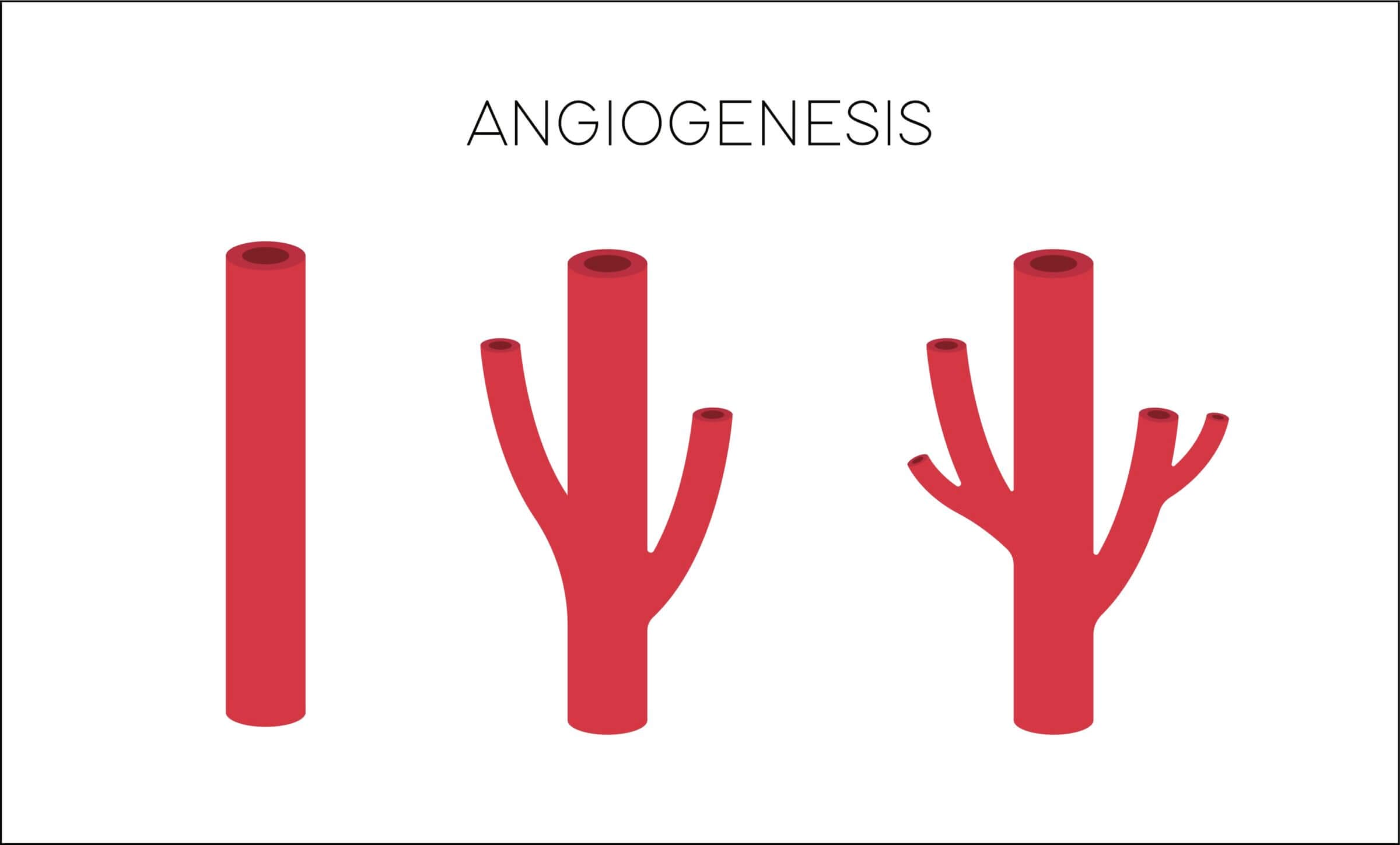
One of the most critical aspects of tissue and wound healing is blood flow. Without the right amount of blood flow to the affected area — which facilitates the delivery of oxygen and essential nutrients — tissue healing will be impaired.
Photobiomodulation (PBM) improves microcirculation and perfusion in injured tissue via vasodilation and angiogenesis (the creation of new blood vessels).
Additionally, photobiomodulation triggers the release and activation of several growth factors, including nerve growth factor (NGF) and vascular endothelial growth factor (VEGF), which are both important for speeding up tissue and nerve repair.
PBM also induces biochemical changes in the mitochondria of the affected tissue. Specifically, it triggers an increase in electron transport and ATP production (among other things) that promote cellular proliferation, wound healing, decreased inflammation and pain inhibition.
2. Cartilage Regrowth
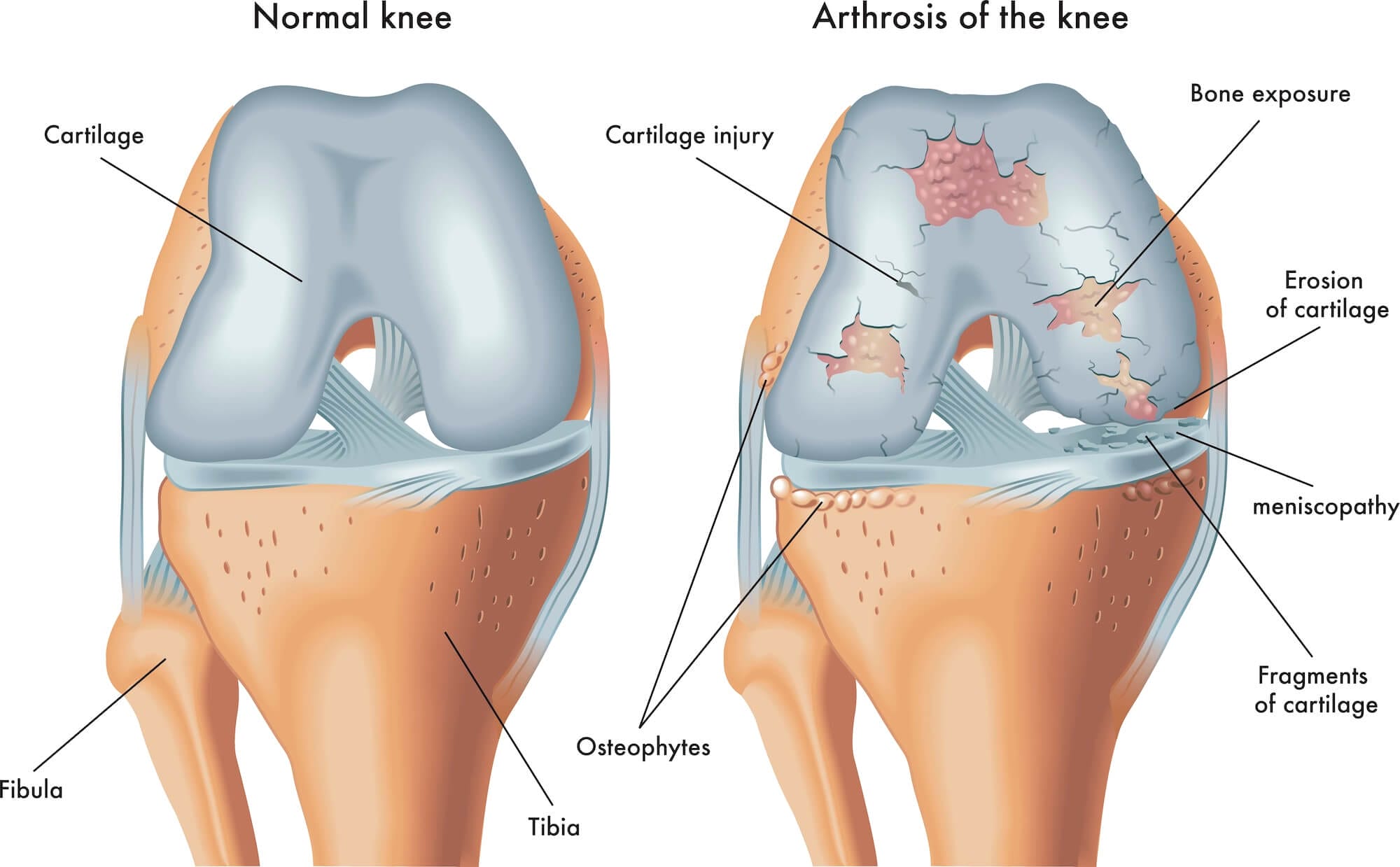
Many people think that once the cartilage tissue in joints is gone, there’s nothing you can do to regrow it. However, that’s not entirely true. Clinical studies have shown that low-level laser therapy can help rebuild cartilage tissue by way of increasing the production of mesenchymal stem cells that help the body create new bone and cartilage.
3. Pain Reduction
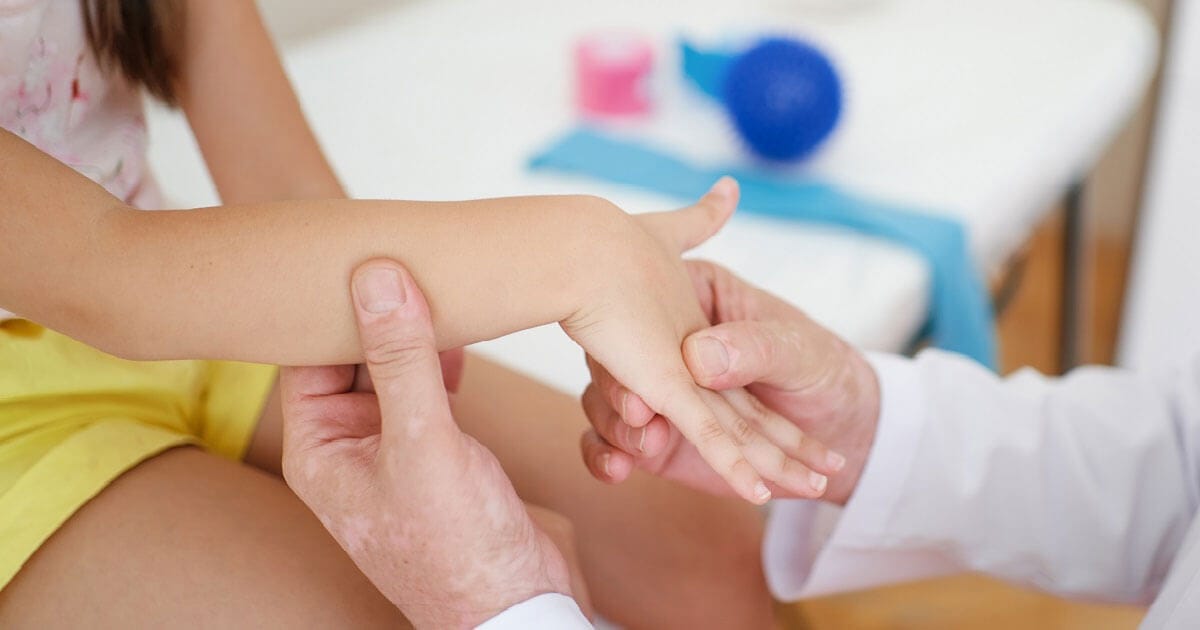
The sensation of pain (nociception) is arguably one of the most irritating aspects of joint problems — and knee pain in particular — because it can significantly affect your quality of life. The good news is that photobiomodulation (PMB) is an effective treatment option to significantly reduce knee pain, including pain in the back of the knee.
PBM reduces pain via several different mechanisms, including:
- Increases acetylcholinesterase (AChE), the chief neurotransmitter of the parasympathetic nervous system that degrades the pain neurotransmitter acetylcholine.
- Increases serotonin and β-endorphin synthesis, both of which are important neurotransmitters related to pain relief.
- Suppresses bradykinin, another neurotransmitter that’s responsible for pain reception.
- Downregulates the speed of neural transmission by modulating Na⁺/K⁺-ATPase, an enzyme also known as the sodium-potassium pump.
What that means in plain English is that photobiomodulation blocks certain pain signals from reaching your brain, while also releasing chemicals that make you feel better.
Additionally, when the light receptors (chromophores) in the cells absorb the light emitted by a photobiomodulation device, the body dumps nitric oxide (NO) into the affected tissue. That further increases blood flow, modulates nerve transmission, stimulates the opioid receptors and normalizes inflammation, leading to a reduction of pain.
4. Inflammation Reduction
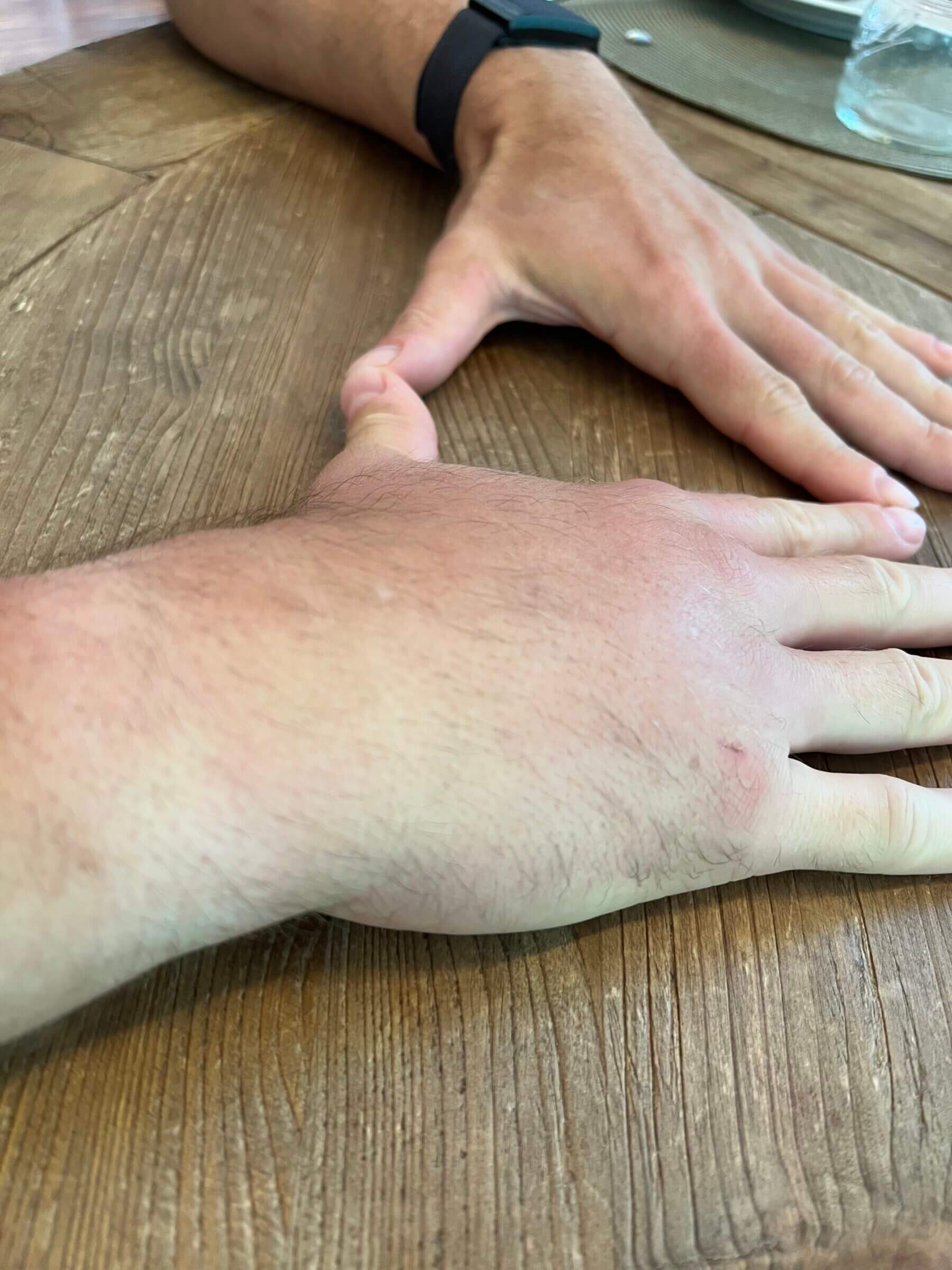
A randomized, placebo-controlled clinical trial on patients with Achilles tendinitis demonstrated that photobiomodulation reduced inflammation as measured by prostaglandin E2 (a mediator for pain sensation and inflammation) concentrations.
From a chemical perspective, light therapy decreases the expression of pro-inflammatory factors (such as IL-1β, IL-6, IL-10, COX-2 and IFN-γ) and it increases the expression of anti-inflammatory cytokines such as IL-2, IL-4 and IL-13.
In other words, photobiomodulation causes the suppression of chemicals that fuel inflammation while also triggering the release of chemicals that actively fight it.
However, keep in mind that inflammation isn’t the root cause of your joint issues — it’s a symptom of something else that, in turn, manifests in your joints. In other words, you have to fix the root cause of inflammation to find a long term solution, as we’ll discuss in the next section.
Plus, acute inflammation (as opposed to chronic inflammation) is an important part of the body’s healing process.
For example, if you sprain your ankle, your body responds by releasing inflammatory chemicals that cause swelling. But those inflammatory chemicals also improve blood flow to the affected area, thus speeding up the healing process.
In other words, if you experience acute inflammation as the result of an injury, your first course of action should not be to try and suppress it (as is the common advice), but rather to support the inflammatory process.
For example, the last time I got stung by a bee (we have several beehives on our homestead), I applied heat instead of an ice pack. As a result, the swelling and pain disappeared faster than the previous times I’ve been stung, when I applied ice.
I know that sounds counterintuitive, but it works because heat denatures the proteins that make up bee venom and increases blood flow to help spread the venom (thus diluting it) and transporting it off.
Using ice, on the other hand — like the classic RICE protocol would suggest — would ensure the venom’s proteins remain intact (and effective), and would reduce blood flow, thus inhibiting the body’s natural inflammatory response.
Inflammation and Nutrition
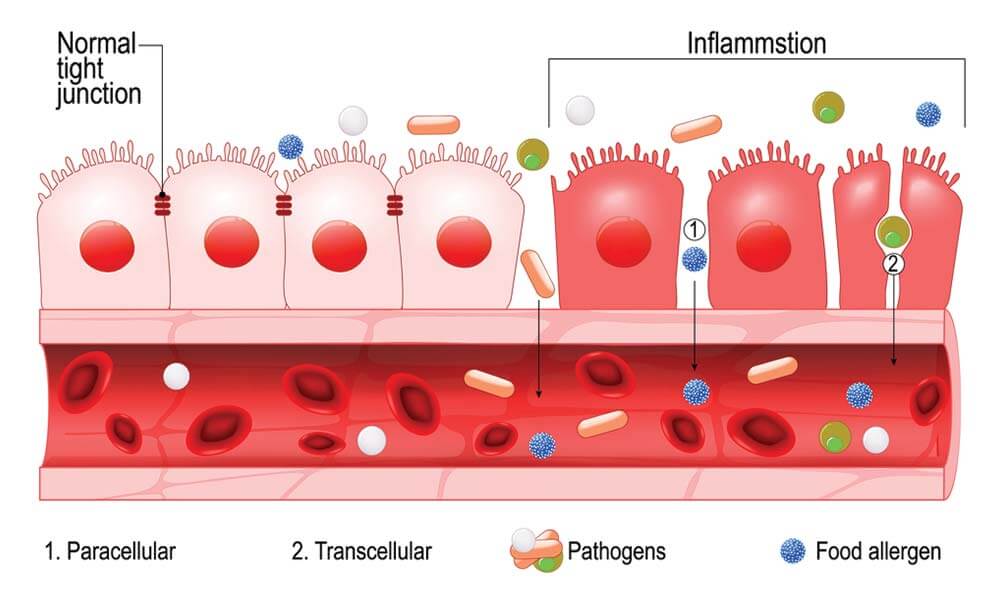
You might not be aware of it, but poor nutrition is a critical factor in chronic inflammation. Specifically, the food you eat can directly impact how your immune system functions, and it’s your immune system that is responsible for your body’s inflammatory response.
Many foods contain pro-inflammatory chemicals, such as proteins and antinutrients, that cause your immune system to go into overdrive. In the worst-case scenario, an overactive immune system can start attacking perfectly healthy cells, causing what’s known as an autoimmune disease.
What’s one of the most common autoimmune disorders, as far as joint pain is concerned?
Rheumatoid arthritis.
Another common cause for joint pain is gout, an inflammatory disease that occurs when too much uric acid deposits and crystallizes in the affected joints. What most people (and even many medical professionals) don’t understand is that this disease can be prevented and cured by removing foods that are high in oxalates and other plant-based defense chemicals (e.g., antinutrients).
If you’re interested in learning more about the nutritional aspect of inflammation, I strongly encourage you to read the nutrition part of my healthy lifestyle guide and my article discussing the defense chemicals in plant-based foods.
One thing is clear: if nutrition is causing chronic inflammation in your body that manifests as joint pain, you’ll have to make the necessary changes to your diet in order to fix the problem.
If you don’t have time to read through both of the above-mentioned articles right now, here are some of the foods that are known to trigger inflammation:
- Grains and legumes (unless properly prepared via soaking, sprouting or fermenting).
- Industrial seed oils (a.k.a. vegetable oils).
- Added sugars.
- The most toxic plants (leafy greens, nuts and seeds).
Adopting a healthier diet while treating your knee with devices that leverage photobiomodulation technology gives you the best chance of full recovery.
Additionally, one positive side effect of maintaining an appropriate diet can be weight loss. That’s particularly important for reducing stress on an injured or inflamed knee, and for speeding up the recovery process.
Other Treatment Options
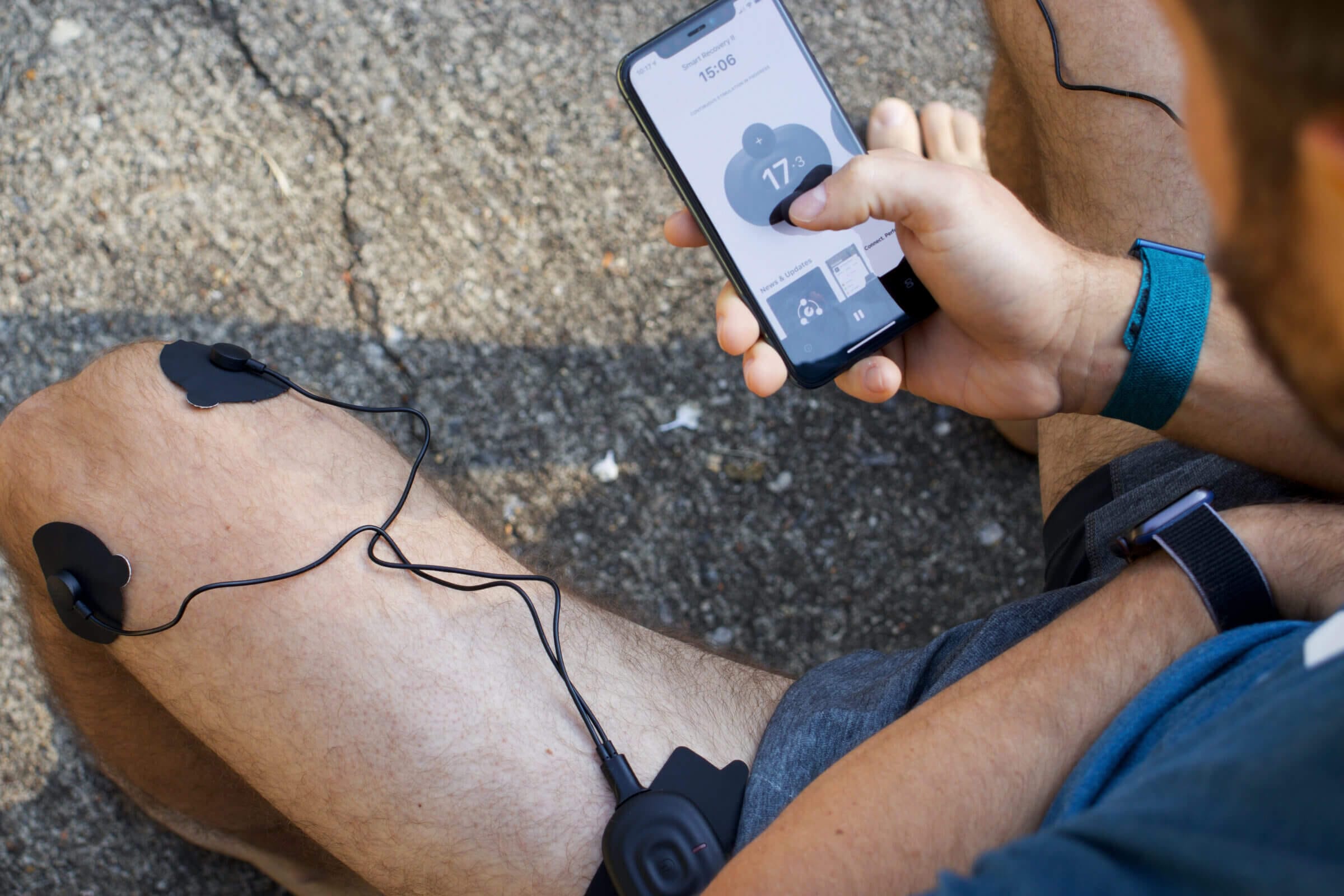
Besides red light therapy, changes in dietary habits and weight loss, there are several other options you can consider for treating the symptoms, root cause or both.
These include:
- Physical therapy.
- Strength training.
- Surgery.
- Transcutaneous electrical nerve stimulation (TENS).
Physical therapy is an excellent treatment option, especially if your joint pain is caused by an injury or accident. Any time I injure myself, I seek the advice of my physical therapist to devise a plan of action.
Often, my therapist recommends strength training using light dumbbells or resistance bands to strengthen the muscles and ligaments surrounding the injured area. That improves blood flow and helps the body to shift some of the load to surrounding muscle tissue.
In severe cases, you might need surgery to reattach a torn ligament or muscle. I always consider surgery a last resort because it comes with significant risks and surgeons often can’t guarantee a full recovery. But even if you opt for surgery, I recommend making photobiomodulation and changes to your dietary lifestyle a part of your recovery strategy.
I’ve also successfully experimented with transcutaneous electrical nerve stimulation (TENS) as part of my PowerDot review. TENS is a great tool to temporarily block pain signals, but it doesn’t help fix the underlying issue.
How to Treat Joint Pain With Photobiomodulation

Now that you have a better understanding of why photobiomodulation is so effective for treating joint pain, let’s talk about how to get started.
If you want to treat your joints at home (as opposed to in a doctor’s office), you’ll need to purchase a photobiomodulation device. I’ve had great success treating my injured shoulder with the Kineon Move+, so that’s the device I recommend.
The device I use comes with an adjustable strap that fits perfectly around the knee, shoulder and similar body parts. Three separate light modules blast red light from three sides to ensure comprehensive joint coverage.
The standard treatment protocol includes one five-minute session each day, but the company told me that increasing the treatment time to 10-15 minutes leads to faster results. I’ve been using Move+ on my shoulder over the course of two weeks for 2×15 minutes per day (as of this writing) and I’ve noticed a significant reduction in pain, improved mobility, and strength that’s almost back to my baseline.
What I love about Move+ is that it’s a passive device. You can slap it on while watching TV without having to take any manual action. If you read my Solio Alfa+ review (another red light therapy device), you might remember that one of the disadvantages of that product is its usability, as it requires you to move the device over the affected area in a circular motion — similar to an ultrasound probe.
The other thing to consider with any treatment protocol is safety and potential side effects. The good news is that photobiomodulation is generally safe and there are no known side effects.
As far as treatment length is concerned, you can expect to notice improvements within the first two weeks. But some users have reported improvements after only one session.
It took me a couple of days before I started noticing meaningful improvements. However, keep in mind that I was working out frequently instead of giving my shoulder time to rest. Had I stopped abusing my shoulder during the treatment period, I may have seen faster results.
Frequently Asked Questions
Yes, light therapy devices that leverage laser diodes instead of LEDs are usually more effective in treating inflammatory joint issues because their light is more focused and can penetrate deeper into the affected tissue.
Infrared light, and near infrared (NIR) light in particular, is an effective method for treating skin conditions, for increasing collagen production in the skin, and for improving the skin’s blood circulation. However, NIR light usually doesn’t penetrate the affected tissue deep enough to help with joint issues.
One of the best ways to support your knees is to consume a nutrient-rich diet that’s centered around well-raised animals, their organs, and the least toxic plants. Besides that, you can consider leveraging a high-quality collagen supplement. Check out this article for a list of my favorite collagen powders.
Absolutely! Photobiomodulation can help with most inflammatory muscle, joint or ligament issues, including back and neck pain.
Photobiomodulation is effective on most joints and muscle groups, but it works quickest in areas that have enough tissue. For example, you’ll likely notice significant symptom improvements and a reduction in pain within two weeks when used on your shoulder or knee, because those areas have more tissue than your hands or fingers. So if you suffer from rheumatoid arthritis in your hands or fingers, it might take several weeks of treatment to see similar effects.
Red Light Therapy for Joint Pain and Arthritis: Summary & Final Thoughts

Red light therapy, and photobiomodulation in particular, have been around for decades. But scientists have made significant advancements in the past few years, coming to better understand how this technology can be used to treat both acute and chronic joint pain.
With that said, the benefits of light therapy go way beyond joint pain and arthritis. A systematic review of photomodulation for spinal cord injury revealed that PBM “has an anti-inflammatory effect, is effective in reducing the size of spinal cord lesions and helps to absorb administered proteins and stem cells to the lesion site.” Another meta analysis concluded that photobiomodulation is effective for the management of oral mucositis (the painful inflammation and ulceration of the mucous membranes) in cancer patients.
As far as joint pain is concerned, exposing the affected tissue to specific wavelengths of light increases oxygenated blood flow, helps grow new cartilage and bone tissue, reduces pain and normalizes inflammation.
I’ve experimented with light therapy over the past few months in the context of infrared saunas, as well as for pain management.
I’m 40 years old but fortunate to not suffer from knee pain or other chronic joint issues. However, I do occasionally overexert myself during CrossFit workouts, and I’ve strained more muscles than I care to remember.
Light therapy has been an excellent tool in my arsenal to treat those injuries and to speed up the recovery process.
If you suffer from arthritis pain, knee pain, joint or other soft-tissue problems, I encourage you to give red light therapy a try.
To learn more about the devices I use, check out my in-depth review of Kineon Move+ (my favorite photobiomodulation device) and Solio Alfa+ (a red light therapy device I used in the past).

Michael Kummer is a healthy living enthusiast and CrossFit athlete whose goal is to help people achieve optimal health by bridging the gap between ancestral living and the demands of modern society.

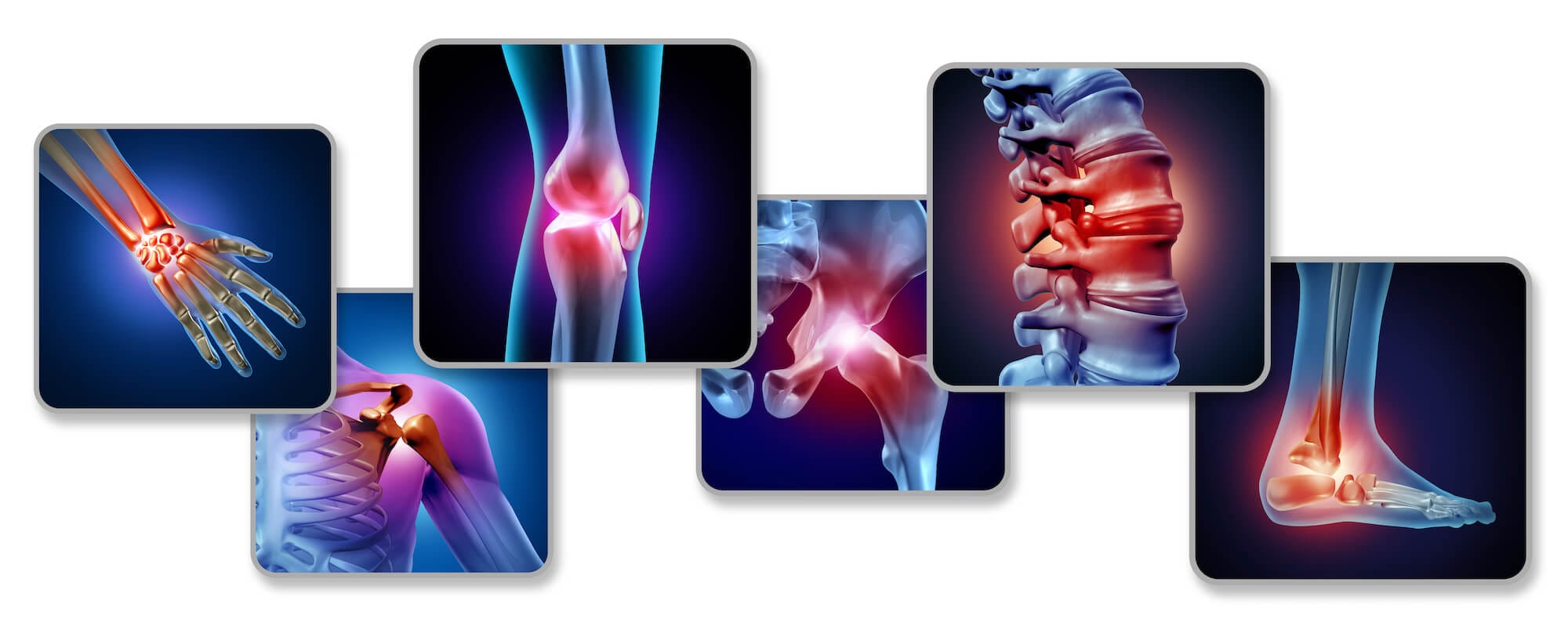

Hi, I have a large amount of tenosynovitis around in my wrist and two tendons . I’ve injured this area twice, I also have rheumatoid arthritis. What would be suitable, I need to break it down or I have to have surgery. I haven’t got pain because I have a very good diet. Hoping to break it down ?
Hi Mark,
I’d go with something like the Kineon Move+ Pro to treat your wrist. Whether or not you’ll need surgery is difficult to tell but I’d give red light a chance first. When you say “very good diet,” what do you mean by that? What do you eat on a regular basis?